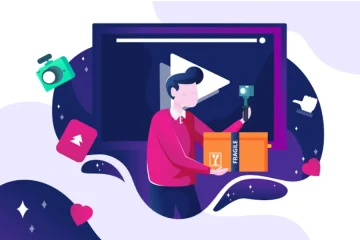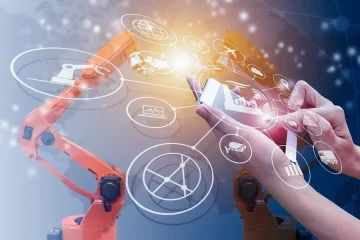Advancements in artificial intelligence (AI) are transforming industries at an unprecedented pace. Among the most exciting innovations is AI dubbing, a technology with the potential to overcome language barriers in video content. Whether it’s films, marketing videos, or education tutorials, AI-powered dubbing can enable creators to deliver their messages effectively to a global audience.
This article will explore how AI dubbing works, its benefits, challenges, and the thrilling future it promises. For anyone looking to harness this groundbreaking technology, AI-dubbed content is the key to true accessibility and engagement across cultures.
How AI Dubbing Works
Before we jump into the growing influence of AI dubbing, it’s crucial to understand how it functions. AI dubbing combines voice synthesis, lip-syncing technology, and advanced machine learning algorithms to transform video dialogues from one language into another. Here’s a simple breakdown of the process:
1. Speech-to-Text Conversion
It begins with converting the spoken dialogue in a video into text. Automatic speech recognition (ASR) tools play a significant role here, efficiently transcribing the original audio.
2. Translation
Once the text is obtained, language translation tools step in to translate the script into the desired language. These translators leverage neural networks that improve accuracy by understanding context and cultural nuances.
3. Voice Generation
Using text-to-speech (TTS) systems, the translated text is matched to a synthetic voice similar to the original actor’s tone, pitch, and emotion. Advanced AI tools enable customization, creating natural and lifelike voices.
4. Lip-Syncing and Integration
Lip-syncing algorithms align the voice-over with the video, ensuring a seamless viewing experience. This technology accounts for speech timing and mouth movements to make the dubbing appear native.
Each of these steps relies on deep learning models trained on enormous datasets of language, speech patterns, and visual cues. Together, they make AI dubbing an efficient and scalable solution compared to traditional manual methods.
The Benefits of AI Dubbing
AI dubbing is more than a tech upgrade—it’s a game-changer for industries worldwide. Its benefits span across scalability, cost efficiency, and audience inclusivity. Here’s why it’s in high demand:
1. Breaking Language Barriers
Language can be a significant hurdle for content creators aiming to reach international audiences. With AI dubbing, they can easily localize their content into dozens of languages, catering to global markets without losing their message’s emotional essence.
2. Cost-Effective and Faster Turnaround
Traditional dubbing processes often involve hiring multilingual voice actors, translators, and production teams, all of which can be expensive and time-consuming. AI dubbing simplifies the workflow, cutting costs dramatically and significantly reducing production timelines.
3. Enhanced Accessibility
AI dubbing plays a critical role in making content accessible to non-native speakers and individuals with hearing or visual impairments. By seamlessly translating and narrating content, it ensures more people can enjoy and benefit from it.
4. Consistency Across Markets
Maintaining the same voice for a brand or character can be challenging across languages. Voice synthesis in AI dubbing allows creators to replicate specific tonal qualities, ensuring uniformity and avoiding any cultural misinterpretations.
5. Scalability for All Types of Content
Unlike traditional dubbing, which might be limited by human resources, AI dubbing is endlessly scalable. Whether it’s a library of training videos or hundreds of TV episodes, AI tools can handle large-scale projects efficiently.
Challenges in AI Dubbing
Despite its impressive potential, AI dubbing does have challenges, especially as the technology continues to evolve. Understanding these is key to refining its application.
1. Accuracy
While AI excels at translating languages, achieving perfect semantic and cultural accuracy remains a work in progress. Idioms and colloquial terms may not always translate well, leading to potential misunderstandings.
2. Voice Emotion and Authenticity
Human voices are rich in emotion, which AI systems can struggle to fully replicate. Even advanced AI dubbing tools are challenged when it comes to capturing subtle nuances like sarcasm or irony.
3. Cultural Context Sensitivity
Movies and shows are rooted in specific cultures, and dubbing requires an in-depth understanding of cultural dynamics. AI-based tools need optimization to provide translations that resonate authentically with different demographics.
4. Lip-Syncing Imperfections
Though AI has dramatically improved lip-syncing capabilities, moments of mismatch still occur, distracting from the viewing experience. Further refinement of algorithms is necessary for perfect synchronization.
5. Ethical Concerns
The emergence of synthetic voices raises ethical concerns, from copyright infringement to the misuse of voice cloning. Protecting intellectual property and consent will be an ongoing debate.
Future Trends in AI Dubbing
AI dubbing has matured significantly in recent years, but its future holds even more promise. Companies are actively investing in research to overcome limitations and push boundaries. Here’s what lies ahead:
1. Advanced Emotion Recognition
Future AI dubbing tools are expected to incorporate enhanced emotional intelligence. This will allow for better detection and replication of a speaker’s mood, resulting in more natural voice performances.
2. Multilingual Personalization
Imagine watching a video in your language of choice with voices tailored to your preferences. AI dubbing systems are moving toward hyper-personalization, catering to individual user needs more effectively.
3. Interactive AI Translators
The combination of AI dubbing with real-time translation opens the door to interactive communication. Viewers of live content could choose their preferred language subtitle or dubbing on the fly.
4. Integration with Other Media Technologies
Integrating AI dubbing with technologies like augmented reality (AR) and virtual reality (VR) could redefine how we experience content. Gaming, education, and remote work industries are likely to leverage this synergy.
5. Improved Translation Libraries
Continuous training of AI models will expand capabilities, covering even less commonly spoken languages and dialects. This democratization will empower smaller linguistic communities.
6. Accessibility Standards Leadership
AI-powered solutions will take center stage in ensuring content aligns with global accessibility requirements. Automated dubbing doesn’t just enhance market reach—it also makes content equitable for every viewer.
For businesses, content creators, and educators, this evolution in AI represents an incredible opportunity to connect with global audiences more meaningfully.
Real-World Applications of AI Dubbing
No discussion of AI dubbing is complete without touching on its real-world uses. Beyond entertainment, this technology is reshaping various sectors:
- Entertainment Industry
Hollywood and global streaming giants have already begun leveraging AI dubbing to localize movies, shows, and documentaries. This expands their reach into non-English speaking territories faster than traditional dubbing.
- Corporate Training and E-Learning
Companies deploying training videos to multinational teams can use AI dubbing for seamless multilingual delivery, boosting employee engagement and comprehension. Similarly, e-learning platforms can localize courses for international students without additional cost.
- Marketing and Advertising
Video marketing campaigns benefit tremendously when translated into multiple languages. AI dubbing allows brands to target diverse audiences effectively while ensuring cultural relevance in their messaging.
- Healthcare Communication
Dubbing medical training videos and patient education materials supports healthcare professionals globally and ensures valuable resources are accessible to non-native speakers.
For those interested in leveraging cutting-edge technology, consider the versatility of an online video translator. It showcases how far AI-based dubbing has come and why it’s integral to the future of multi-language video content.
Looking Ahead
The evolution of AI dubbing marks the dawn of a new chapter in how we share and consume information worldwide. From amplifying cultural exchange to breaking down barriers in education and commerce, this technology epitomizes innovation with social impact.
Challenges persist, but ongoing research and development suggest solutions are on the horizon. For creators and brands alike, investing in AI dubbing tools doesn’t just improve productivity—it transforms how they engage with the world. The promise of making your videos speak any language is no longer distant; it’s unfolding now, and it will shape how we connect and communicate in ways we can scarcely imagine.




